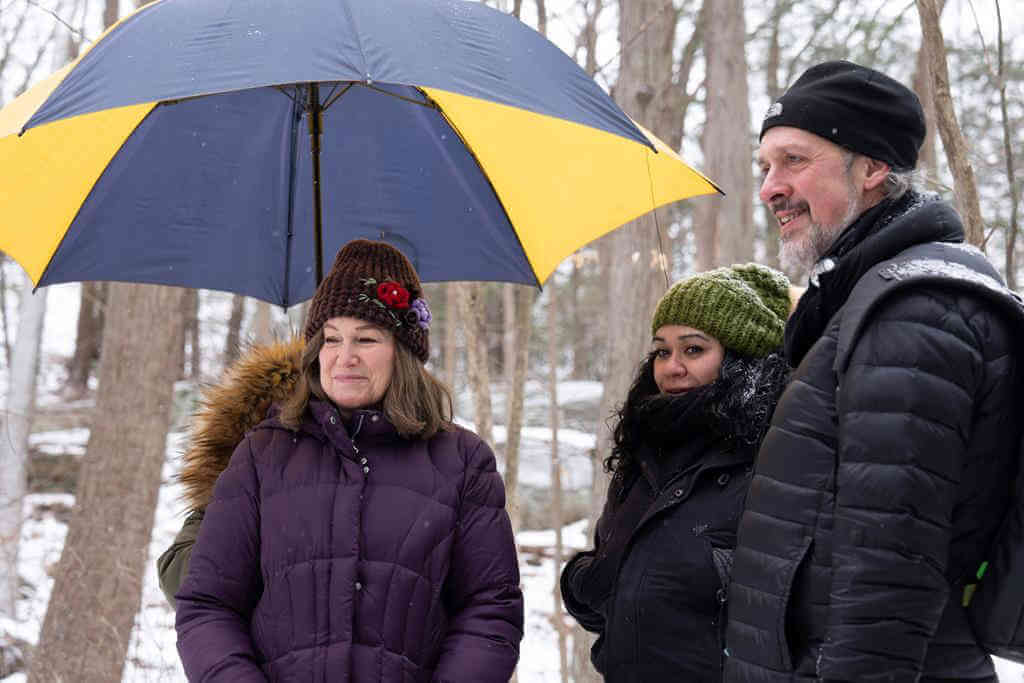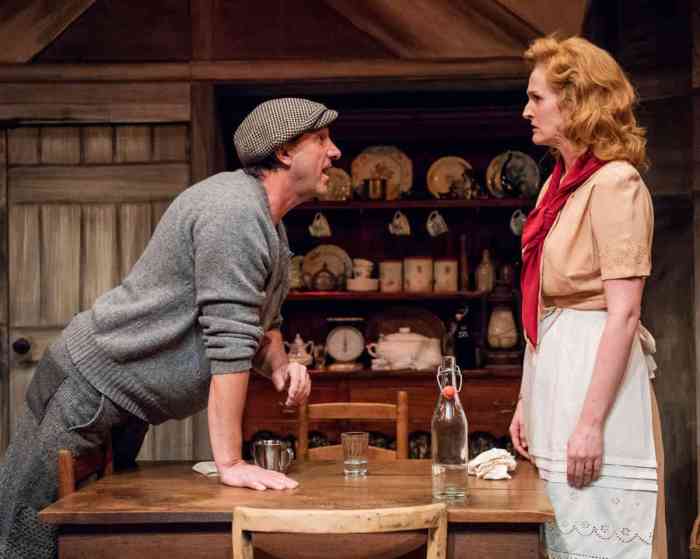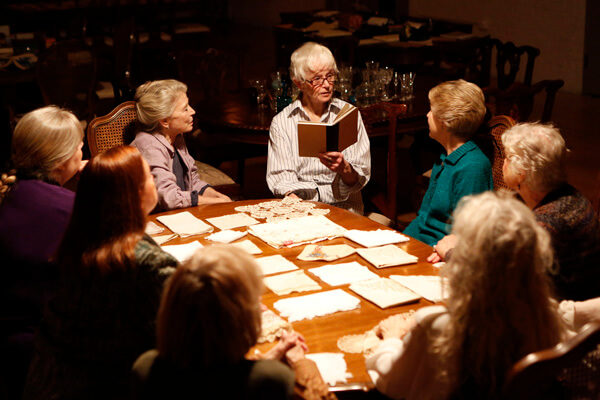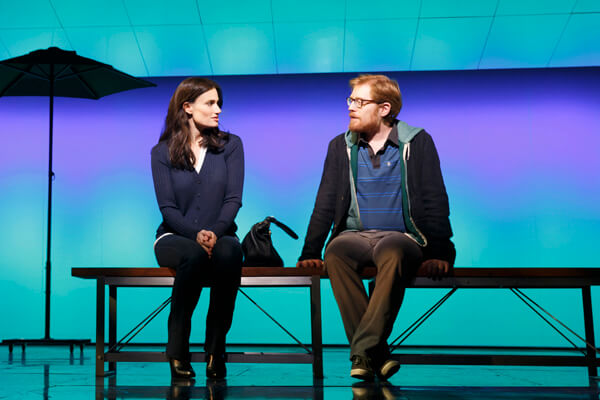Kent Jones, critic, documentarian, and director of the New York Film Festival, is one ballsy dude. He has gone out on that most precarious of limbs and made his own first feature film, “Diane.” And, most gratifyingly, this beautiful, delicately wrought, searingly honest, and deeply humane work is much more in the tradition of critics-turned-moviemakers Truffaut and Godard than of Rex Reed, who notoriously starred in “Myra Breckenridge.”
In “Diane,” Mary Kay Place, universally beloved second banana since her days in “Mary Hartman, Mary Hartman,” is finally given a starring role and, if there is any justice, should win the Oscar for her portrayal of a woman who tirelessly gives of herself to dying family members, the local homeless, and an infuriating, drug-addicted son (Jake Lacy) — everybody, it seems, with increasingly diminishing returns. She herself, however, is actually far from a tiresomely perfect saint.
Gay City News spoke to Jones about his feature directing debut.
DAVID NOH: First of all, may I thank you for showcasing Mary Kay Place in the kind of role every actress dreams of, but especially these days, only Meryl ever seems to get.
KENT JONES: When I was a kid, my mom and I would watch “Mary Hartman, Mary Hartman” together, and then I saw her in “New York, New York,” “Starting Over,” “The Big Chill.” But it was “The Rainmaker,” which was not a starring role for her, in which I saw what I recognized from growing up with my grandmas — a mixture of stoicism, toughness, and tenderness. And also, I suppose, a quality that isn’t there in that performance, and which was something Mary Kay and I talked about a lot — bearing guilt.
She’s amazing, a great artist. I wrote the part for her, never had anybody else in mind. She and I met before I had even written a first draft, but I told her what I had in mind and she was very interested. I sent her another script I had written and she loved it. So she waited and when she finally got her script, she said she hoped she would like it and, obviously, she did, so it worked out.
NOH: Getting the financing for any independent, highly individual film is so tough.
JONES: Sure, a first time filmmaker, an older first time filmmaker, who’d made documentaries about cinema, doing a film about a woman in her 60s going into her 70s and 80s, surrounded by a bunch of women who are even older? A drug addict, mortality, death?
NOH: American life today, as we know it.
JONES: Well, yeah. The idea for this evolved over many years. The son being a drug addict was based on the experiences of a friend of mine. It’s life as people live it, sometimes it feels like it’s moving faster than you.
NOH: It looks, moves, and sounds so beautifully. May I ask what was the budget?
JONES: A little over a million, 20 shooting days, and then we kind of stole a day at the end, with just me, my DP [Wyatt Garfield was the terrific cinematographer], focus puller, and grip. We got into a car; I did a lot of the driving.
NOH: Your cold New England locale was so wonderfully specific, with a novelistic detail to it, but the human conditions here are universal. I’m from relentlessly sunny Hawaii, but one can feel the winter of the soul anywhere.
JONES: You know, if the shooting window had opened up in summer, that would have been the movie. But the great thing about limits is you have to be able to work with what you have, and that’s your canvas for whatever metaphor you want. They then don’t become limitations, those are your tools. And the schedule pressure can become a tool, too. If you get to a certain point in the day when you are getting closer to the end of the workday, you have to make a decision. Do I really need the setup that I planned or can I lose it because I already got what I need? Or do I want it, knowing that it will cut into valuable time, working with the actors, because out of that more surprises come?
NOH: Your cast is frankly phenomenal, so many great names from New York theater, almost like seeing beloved family members of your own.
JONES: The first time I ever saw a professional actor on the stage was Estelle Parsons as Colette, in Stockbridge, Massachusetts, and she was amazing. I was seven. Arthur Penn lived in Stockbridge and when I was a kid, I remember watching him shoot “Alice’s Restaurant” where I grew up. Joyce [van Patten], I watched her in “Mikey and Nicky” again, not that long before we shot this, and I worship at the altar of Andrea [Martin].
LaChanze [in a single, deeply affecting scene] was amazing. My wife [Carisa Kelly] was the costume designer, and I told her I wanted LaChanze to have lots of stuff so that when her hands moved, you’d hear the clicking, and she was great. I loved working with her. That was a great day!
Jodi Angstreich was my amazing casting director, and you know what? If you’re writing roles for women over 55, you have so many amazing artists to choose from. I loved Phyllis [Somerville], and when Deirdre O’Connell read the script, she said, “I love this and I’m gonna do it but I just want to know where you’re from.” I said, “Massachusetts,” and she said, “I know that, but what town?” “Pittsfield,” and she said, “I knew it!” I went to nursery school with her brother, her father founded the local community college. My mom was good friends with her, I knew her parents, she dated all these local guys. And she recognized the names in the scene where Mary Kay and Andrea are sitting at the table, naming the people who died.
NOH: I once dated a drug addict, and may I say your film is one of the most authentically straightforward and honest depictions I’ve ever seen.
JONES: I really love Jake and was so taken with his acting in “Obvious Child.” When I met him I thought, “Okay, this guy understands what this character is and what this dynamic is.” I couldn’t say enough good things about him. He was just a great collaborator and I’d work again with him in a heartbeat.
NOH: The film becomes almost like a mounting tragedy or murder mystery without any murder, at the end when all these deaths pile up. You realize, “Oh that IS life!” Like every time I go home, I wonder if this will be the last time I ever see certain aunts.
JONES: Yeah, I remember when all my aunts and uncles were alive and you’re 18 and think, wow, they’re going to go on forever, that magical feeling, Of course, they don’t, and they all went very quickly. A friend of mine had one year in which everybody disappeared and then, of course. what do you do? You go on.
NOH: As a fellow film critic, may I again congratulate you on an excellent film but also your courage in even making a movie.
JONES: It was something that I had always been aimed at and had talked about with my friends who are filmmakers. Marty Scorsese was always encouraging in every way, as was Olivier Assayas and James Gray. If I had made a movie when I was younger, it would have been very cinephilic, and I didn’t think I would be able to articulate this, but now maybe I can. I think a lot of people share that “Ohmigod, a movie?!” feeling. I’d made docs but that’s something else. You just have to push it forward and you cannot hide. The director’s job, as Marty said, is to make sure that everybody agrees they’re making the same movie. And that’s why you have to talk to everybody, at the top of the enterprise.
I’ve seen a lot of movies made by people who do hide, and now I can understand more clearly what happened, and it’s never advisable. Sometimes they turn out okay, the crew can even make the movie, as a friend said. That’s what happened with the Dardenne brothers. They were intimidated by the crew so they went back to the drawing board and spent two years figuring out how to make a movie. And that’s how they made “La promesse.”
But I think you have to abandon all that. I had a moment when was thinking, “Oh man, I don’t know if I’m up for this.” And then a light bulb went on and I thought, “Actually, it doesn’t matter because I have to do it, anyway.” And then, of course, the feeling that you’re not up for it just passes like a cloud across the moon.
NOH: Are you planning another film, I hope?
JONES: Yes, I’m just finishing a draft.
DIANE | IFC Center, 323 Sixth Ave. at W. Third St.; ifccenter.com | The Landmark at 57, 657 W. 57th St.; landmarktheatres.com


































